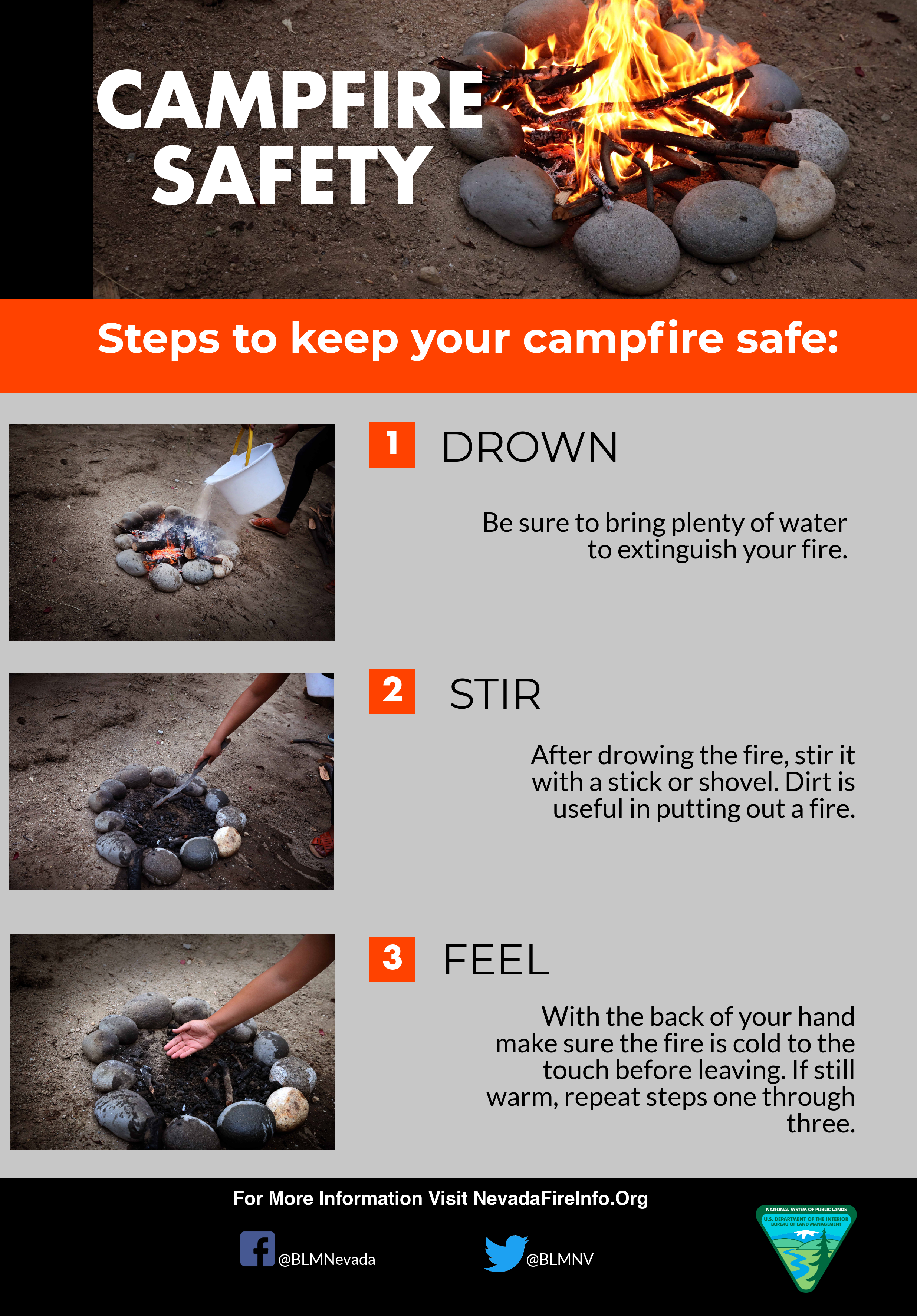Don’t be fooled by recent storms and cooler weather: during an interagency fire briefing with the Governor’s Office earlier this month, experts predicted that Nevada will see extreme drought and notable wildfire risk this summer.
Throughout the state, snowpack is diminishing rapidly, and mid- to high-elevation areas face the worst risk of burning. Carson City and surrounding counties are under extreme and severe drought warnings. Experts have categorized Southern and Eastern Nevada as exceptional drought areas, the harshest drought classification they can designate.
“We have not seen conditions this severe in the last 20 years,” said Gina McGuire, Great Basin Coordination Center fire meteorologist.
One of the largest concerns that the Bureau of Land Management in Nevada and other state agencies face this season in particular is the sharp upward trend in human-caused fires.
Nationally, 87 percent of fires were human-started last year, the BLM said. In Nevada, 67 percent of fires within the state were human-caused, compared to an average of 40 percent in years previous.
Between 2001 and 2005, Nevada faced somewhat comparable (though not as extreme) dryness. In those years, residents saw the Martis and Waterfall wildfires. The Waterfall fire in Carson City raged for almost a week, destroying 18 homes and more than 8,000 acres. Martis burned for a week and a half, closed Interstate 80 and scorched 15,000 acres.
Both were human-caused, from improperly extinguished campfires. And that’s especially concerning to state officials: many of these fires are avoidable.
Officials like McGuire and Paul Petersen, Bureau of Land Management Nevada fire management officer, emphasized how pivotal human action can be in shaping fire season.
“(Nevada is) more susceptible to wildland fire, and also more susceptible to damage. We encourage everyone to recreate responsibly,” Petersen said.
That’s not to say the BLM is only relying on residents and visitors to prevent and control human-caused fires. In fact, they’ve been preparing for a year like this.State Forester Firewarden Kacey KC said that during the 2019 legislative session, Senate Bill 508 allocated $5 million to Nevada Division of Forestry, matching other grant money from a U.S. Forest Service project, Forest Service funds, and a fire fuel reduction agreement with NV Energy.
In large part, that money has gone toward personnel and equipment. Across the state, local governments have added 130 firefighters to their workforce and purchased 19 new fire engines. The Forest Service held on to a contract for one additional helicopter this year to better support ground crews.
Since dryness and burning are turning into year-round threats, the BLM has also extended the fire season from five months to nine months for the past three years, allowing it to hold on to seasonal firefighters and resources.
Still, the BLM, forest services, and fire agencies throughout the state would rather rely on preventive action, including local efforts to thin fire-fuel sources.
“There’s not a lot we can do about lightning strikes and those sort of things,” Gov. Steve Sisolak said during the briefing. “What we can do as residents in Nevada is be aware… If we could just eliminate or greatly reduce the number of fires that are caused as a result of human behavior, that will go a long, long way.”
In response to the sudden spike in human-caused fires, Sisolak signed a proclamation announcing Nevada’s Wildfire Awareness Campaign on May 10, three days before the interagency meeting. Central to the campaign is a series of fire-safety webinars for Nevadans.
Living With Fire - A Virtual SeriesThe Timeline of Climate, Weather and Fire, 11:30 a.m. June 10.
Climatology Research Professor Tim Brown, also director of the Western Regional Climate Center, will discuss how weather and climate influence fire in Nevada. Register online at
bit.ly/ClimateWeatherFire.
Protect, Prevent and Prepare With NV Energy, noon June 24.
Natural Disaster Protection Plan Director James Saavdra and Director of Delivery Operations Zeina Randall, both with NV Energy, will discuss how NV Energy is working with customers and partners using innovative strategies to reduce the risk of wildfire to Nevadans. Register online at
bit.ly/PPPNVEnergy.
Wildfire Smoke and Health, 11:30 a.m. July 8.
Meteorologist and Public Information Officer Chris Smallcomb, from the National Weather Service – Reno office, will discuss smoke forecasting and models used to predict smoke. Air Quality Specialist Brendan Schnieder, with the Washoe County Health District’s Air Quality Management Division, will discuss wildfire smoke and health impacts. Register online at
bit.ly/WildfireSmokeHealth.
Home Hardening Q&A, 11:30 a.m. Aug. 12.
Living With Fire will host a question-and-answer workshop with Steve Quarles, who is both University of California Cooperative Extension Advisor Emeritus and the retired Chief Scientist for Wildfire and Durability, Insurance Institute for Business & Home Safety Research Center. The session will focus on “home hardening,” defined as building or retrofitting homes to withstand wildfire. To watch a previous presentation on this topic, visit
https://www.youtube.com/watch?v=O-g4-kyiDwU. Register for the August online session at
bit.ly/HomeHardening.
Reseeding and Flood After Wildfire, 11:30 a.m. Sept. 9.
Forester Anna Higgins with the Nevada Division of Forestry, Ecologist Mark Freese with the Nevada Department of Wildlife, and Project Manager Danae Olson with the U.S. Army Corps of Engineers will discuss reseeding landscapes, and preparing for potential flood after wildfire. Register online at
bit.ly/AfterWildfire.
Prescribed Fire in Tahoe and Nevada, 11:30 a.m. Oct. 14.
Fuels Management Officer Keegan Schafer with Tahoe Douglas Fire Protection District and Forest Fuels and Vegetation Program Manager Duncan Leao with the U.S. Forest Service – Humboldt-Toiyabe National Forest will discuss prescribed fire and projects in the Lake Tahoe Basin and Nevada. Register online at
bit.ly/RxFireTahoeNV.
For information on the Nevada Wildfire Awareness Campaign and on how to reduce the wildfire threat, visit
LivingWithFire.com
